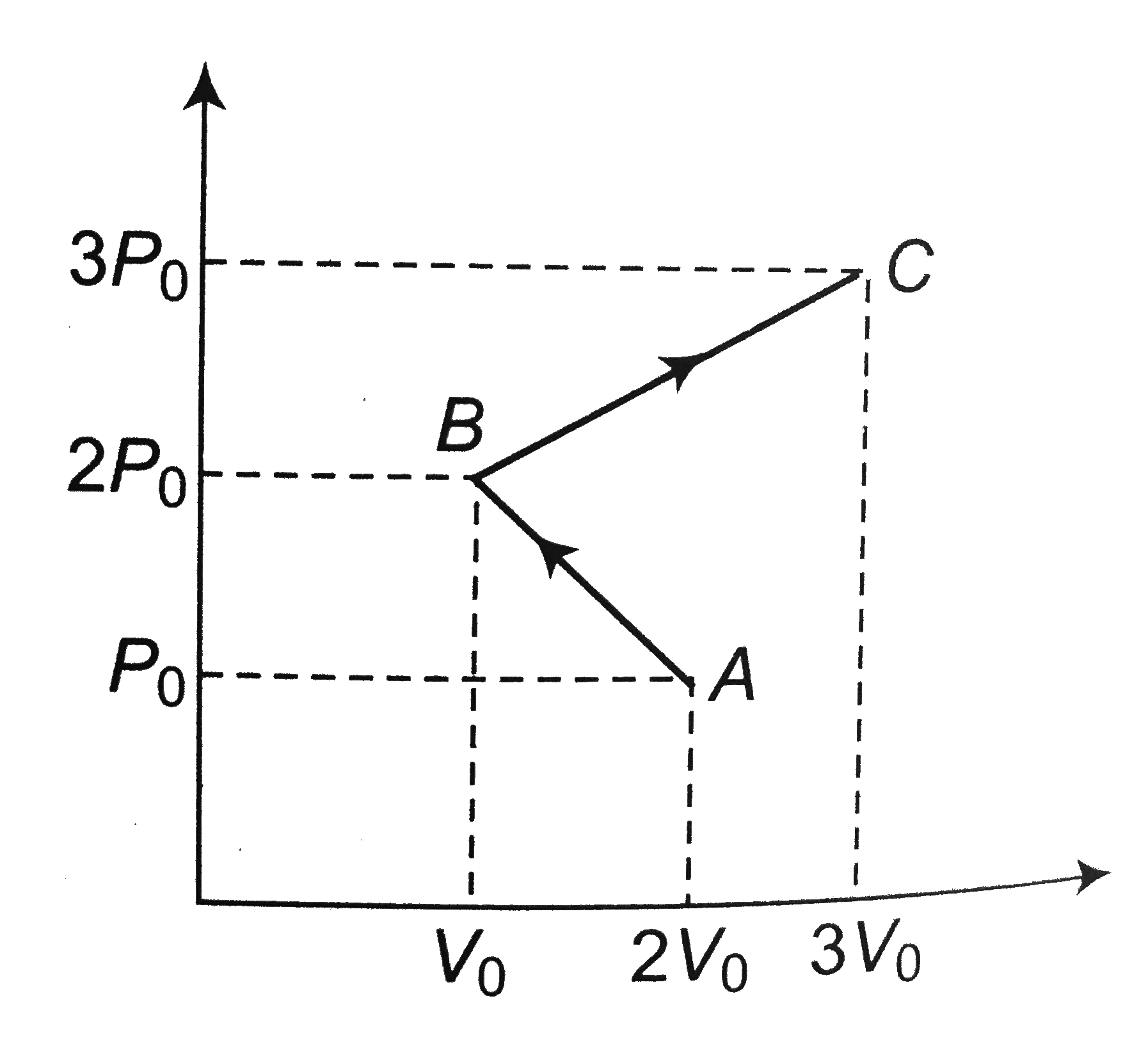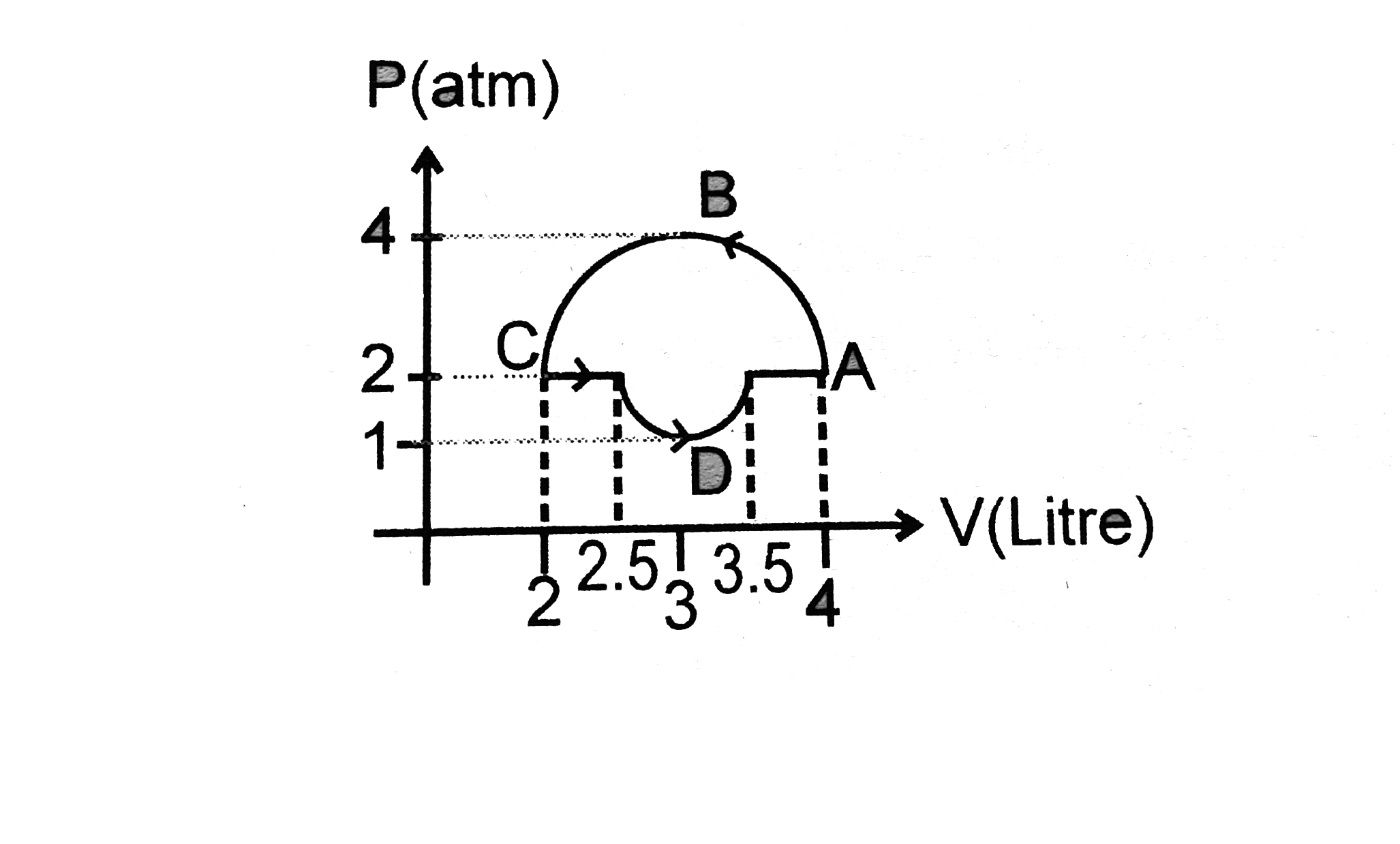Calculate the work done during the process when one mole of gas is allowed to expand freely into vacuum.
To calculate the work done when one mole of gas expands freely into a vacuum, we can follow these steps:
1. Understand the Process: When one mole of gas expands into a vacuum, it is undergoing a free expansion. In this scenario, there is no opposing pressure acting on the gas.
2. Identify External Pressure: In a vacuum, the external pressure is considered to be zero (P_external = 0). This is because there are no particles in the vacuum to exert pressure against the gas.
3. Work Done Formula: The work done (W) during an expansion or compression can be calculated using the formula:
W=−PexternalΔV
where ΔV is the change in volume.
4. Calculate Change in Volume: In this case, since the gas is expanding into a vacuum, it will occupy a larger volume than it initially did. However, since the external pressure is zero, we can substitute this into our work formula.
5. Substituting Values: Since Pexternal=0:
W=−0×ΔV=0
6. Conclusion: Therefore, the work done during the free expansion of one mole of gas into a vacuum is:
W=0
Final Answer:
The work done during the process is 0 Joules.
---
W=−PexternalΔV
where ΔV is the change in volume.
W=−0×ΔV=0
W=0
The work done during the process is 0 Joules.
Topper's Solved these Questions
- THERMODYNAMICS Book:ALLENChapter:THERMODYNAMICS Exercise:EXERCISE -1A
Explore 41 Videos
- THERMODYNAMICS Book:ALLENChapter:THERMODYNAMICS Exercise:EXERCISE -1B
Explore 22 Videos
- THERMODYNAMICS Book:ALLENChapter:THERMODYNAMICS Exercise:EXERCISE -4
Explore 18 Videos
- TEST PAPERSBook:ALLENChapter:TEST PAPERSExercise:MATHEMATICS
Explore 2 Videos
- Thermodynamics And Thermo ChemistryBook:ALLENChapter:Thermodynamics And Thermo ChemistryExercise:All Questions
Explore 40 Videos
Similar Questions
Calculate work done during isothermal reversible process when
5mol ideal gas is expanded so that its volume is doubled at 400K.
View SolutionCalculate the work done (in joules) when 0.2 mole of an ideal gas at 300K expands isothermally and reversible from an initial volume of 2.5 litres to the final volume of 25 litres.
View SolutionFind the work done by the gas in the process ABC.

View SolutionExpansion of a gas in vacuum is called free expansion. Calculte the work done and the change in internal energy when 1 L of ideal gas expands isothermally into vacuum until its total volume is 5L ?
View SolutionWork done during the combustion of one mole of CH4 in bomb calorimeter is
View SolutionCalculate the work done when 1 mole of a gas expands reversibly and isothermally from 5 atm to 1 atm at 300 K. [Value of log 5 = 0.6989].
View Solution71g of chlorine gas is allowed to expand freely into vacuum Calculate w.q ΔU and ΔH .
View SolutionFind work done by the gas in the process shown in figure.

View SolutionFind work done by the gas in the process shown in figure.

View SolutionCalculate the amount of work done when one mole of an ideal gas contained in a bulb of 2 L capacity at 1 atm is allowed to enter in evacuted bulb of 10 L capacity and in another case if is allowed to expand from 1 L to 5 L against a pressure of 1 atm.
View Solution
